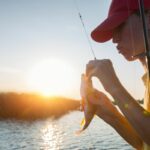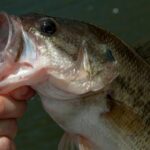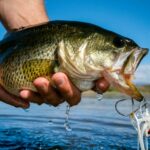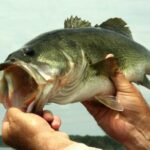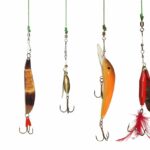Anglers, aquatic lovers, and pond owners find bluegill an exciting species. Young bluegill is roughly the size of a tennis ball and will consume virtually everything they can get their mouths on.
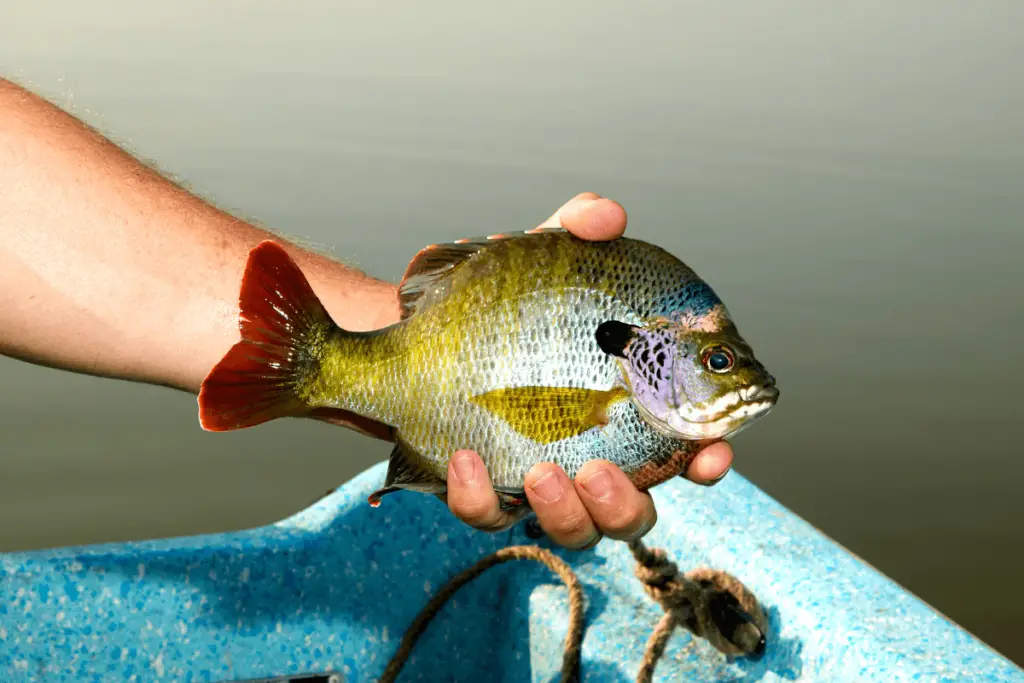
So what do bluegill eat to become so popular? Keep reading to find out more.
Bluegill Fish Diet
It’s essential to know and be familiar with what bluegill eats. If you’re an angler, you should know that the information can be quite helpful when deciding what kind of bait or lures to employ.
If you own a pond or lake, you might want to populate it with bluegill, or you could try to keep the existing bluegill population under control. Or maybe you need bluegill for a school project and want to keep your specimen in a freshwater aquarium you put up at home.
Bluegills are usually considered sight feeders and consume a wide variety of foods at all stages of their life cycle. Microscopic zooplankton, such as Cladocera and Copepods, are the primary food source for young fish.
Bluegill may seek out different food sources if its current food supply is inadequate. They may look elsewhere for sustenance if they can’t find enough of their usual food because they lack insects or other organisms. That’s why you’ll often see bluegill feeding on:
- Insect larvae
- Small baitfish
- Crustaceans like grass shrimp
- Aquatic vegetation
Bluegill’s wide mouth may fit the small aquatic creatures and swallow them whole. In addition to hunting at depth, they can swim on the surface in search of nearby prey. For this reason, bluegill feed on snails and whatever else they can find near the water’s surface.
The evening hours and nighttime are when bluegills consume the most food. However, that is also conditional on where you keep them.
What Do Baby Bluegill Eat?
Bluegill may consume natural and artificial foods when kept in a confined habitat such as a fish pond. If you wish to give your bluegills grass shrimp, minnows, or crickets, they will consume it.
People also give their fish mealworms or grubs, which you can buy at a local pet store. If you’d instead feed your bluegill commercial food, a quick online search for “bluegill fish food” should yield several results.
AquaMax, Purina, and AquaNourish are some of the most well-known brands. They provide a convenient alternate food source for sunfish like bluegill in your pond or aquarium.
Some people even give their bluegill leftovers from lunch. If you opt to provide your fish with leftovers, ensure the food is not contaminated.
Bread, cheese, corn, and rice are not bluegill’s first food choices, but they will consume them. The rate of consumption fluctuates with the seasons. It’s also worth noting that bluegill eat more food relative to their body weight than other fish species.
What Is the Best Bait To Catch Bluegill?
Nightcrawlers and worms are considered the ideal live bait for a perfect catch. You only need to use a piece of a worm that covers the hook. Alternatively, you can use grasshoppers and mealworms to catch bluegill.
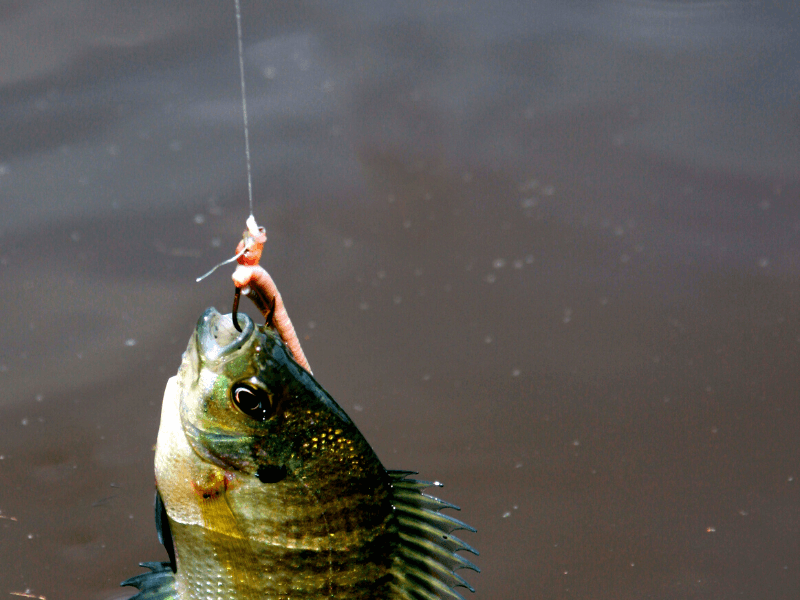
What Do Bluegill Eat in a Pond?
Wild food sources such as crustaceans and minnows are ordinary fare for bluegill in ponds. Private pond owners can choose from several different fish pellets on the market. Using an Automatic Fish Feeder enables a consistent feeding schedule, allowing you to keep trophy-sized fish.
The devices often get mounted along the bank or dock to dispense food to the fish at predetermined intervals. Commercial ponds usually want their fish to get as big as possible to attract more anglers. A huge factor in raising big, healthy bluegill is supplying them with a steady flow of food.
Do Bluegill Like Hot Dogs?
Bluegill is curious, so you can use hot dogs as bait if you don’t have nightcrawlers or worms. The smell and taste of a hot dog will attract bluegill to the hook. Don’t forget to break the hot dog into small pieces.
What Do Bluegill Eat in the Winter?
Bluegill fish’s metabolism and movements reduce in the winter, thus consuming less during colder months, as with many warm-water fish species. When the water temperature drops, most bluegill fish will start hibernating and stop eating.
You might wonder what bluegill consumes when winter forage food and bait are scarce. Bluegill sometimes eat plants that grow in water, such as duckweed and hydrilla. You might have encountered insect larvae and other sediments when slaughtering bluegill.
During the colder months, ice fishermen frequently use smaller equipment, such as micro jigs tipped with tiny grubs. When bluegill isn’t actively feeding in cold weather, the tiny insects can entice them to bite.
Even though there is a good chance of catching bluegill throughout the winter, the best time to do it is in the summer. Remember that there are fewer insects during the winter months. It would be best if you start using flies as winter bait.
Is It Illegal To Keep a Bluegill Fish as a Pet?
Some states allow you to own bluegill fish or keep them as pets in an aquarium or a private pond. Bluegill fishing laws are different in each state. For instance, some states prohibit people from rearing bluegill of specific sizes.
It’s essential to consult with the fishing department in your state to know the correct size you can keep. Ensure to secure a license and observe the laws under recreational fishing regulations.
Bluegill Overpopulation in a Pond
Private pond owners often face difficulties when controlling the bluegill population. Like other kinds of sunfish, bluegill will take over a pond, causing it to become overcrowded.
If the bluegill in your pond or lake is between three and four inches long and eats everything that gets in their way, it’s time to reduce their numbers.
Ecological imbalance is the leading cause of an overpopulated pond. An overcrowded pond indicates that you don’t have large predator fish, like Largemouth Bass, which prey on bluegill to keep their numbers in check.
In addition, consider checking if your pond has a deeper systemic issue, such as a lack of nutrients or an unsuitable habitat. Start by determining from where your pond acquires nutrients.
It would help if you started using Conductivity Temperature Depth to measure the nutrients in your pond. Alternatively, you should consider using a photometer with a fish expert’s help.
Get in touch with a lake management specialist if you are passionate about maintaining your pond for gamefish like bluegill. The consultant will do basic tests on your lake or pond and advise on the best practices to reduce water quality issues.
It may be possible to reduce the bluegill population, although doing so may be difficult. Some specialists suggest you drain the pond and begin the process again. Other things you can do to reduce the population include establishing clear goals on fish harvesting and introducing predators to the pond.
Final Thoughts
Learning about bluegill’s diet, biology, and behaviors will give you a head start in your quest for knowledge and success. You have several alternatives to provide your bluegill something to eat during the warmer months.
You could buy live bait like worms or crickets or prepare some of their favorite foods like mosquito larvae or mealworms in the kitchen. Ensure your fish have enough food and water to stay healthy and happy during the hot weather.
We hope the article has been helpful in answering the question; what do bluegill eat?
- Do You Need An Indicator For Nymph Fishing? - November 16, 2023
- Fishing Safety Tips For Families - September 25, 2023
- What Is The Best Time To Night Fish At A Lake? - September 18, 2023

